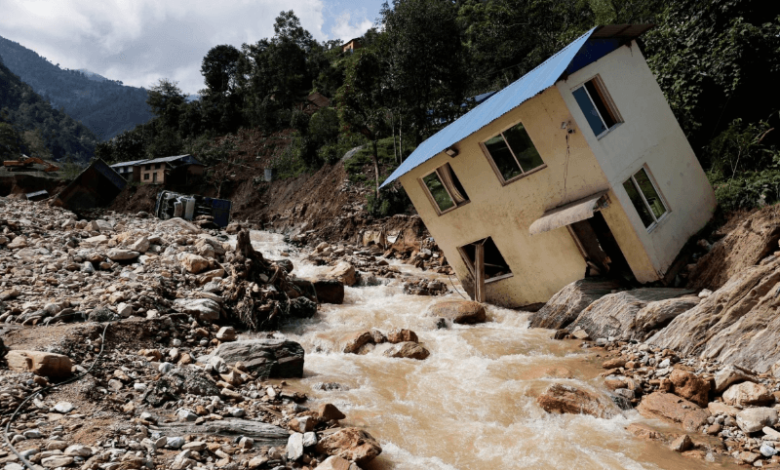Nepal’s Deadly Floods: A Wake-Up Call for Global Climate Action

The floods in late September resulted in the deaths of over 240 individuals in Nepal and it is worsened by approximately 10 percent due to climate change caused by human activities, according to a swift evaluation conducted by a group of prominent scientists on Thursday. In order to protect its citizens from floods in the future, Nepal must strictly limit growth in low-lying parts of its country that are close to rivers, stated by World Weather Attribution (WWA) research.
The World Wildlife Association (WWA) is an international group of scientists that evaluates and communicates the possible effects of climate change on extreme weather events such as storms, heavy rains, heat waves, and droughts.
The study was carried out by 20 scientists affiliated with the World Weather Attribution group, which includes experts from universities and meteorological institutions in Nepal, India, Sweden, the U.S and the U.K as mentioned in a statement from WWA.
The WWA analysis mentioned, “Climate change was responsible for the extreme three day downpours in Nepal about 10 per cent more intense. Bursts of rainfall will become even more heavier, risking more destructive floods until the world replaces fossil fuels with renewable sources of energy.”
The floods in Nepal occurred after three days of intense rainfall started on September 26. Following record-breaking rainfall across central and eastern Nepal, with some meteorological stations measuring more than 320 mm on September 28, devastating floods and landslides resulted in at least 244 deaths and significant damage to the nation.
Witnesses state that the flooding in the Kathmandu valley is uncommon. The recent heavy rains that hit the capital city killed over 50 lives and ruined property valued at billions of rupees.
The investigation made clear that the effects of the flood were considerably worsened by rapid development. The biggest city in Nepal, Kathmandu was among the regions most badly damaged by the floods. Situated in a bowl-shaped valley that encircles the Bagmati river, it has experienced rapid growth in the last several years.
To avoid such flooding disasters in the future, the researchers advised improving early warning systems and acting quickly, “Limiting development in flood-prone urban areas will reduce the number of people in harm’s way and save lives when floods occur in the future.”
Mariam Zachariah, a researcher at the Centre for Environmental Policy at Imperial College London said, “If the atmosphere wasn’t overloaded with fossil fuel emissions,these floods would have been less intense, less destructive and less deadly.”
Furthermore, this study highlights the amount of increased rainfall in Asia, particularly in 2024. Zachariah said that the impact of climate change on deadly floods in Nepal, UAE, China, Taiwan, India, and Oman has been confirmed by research.



